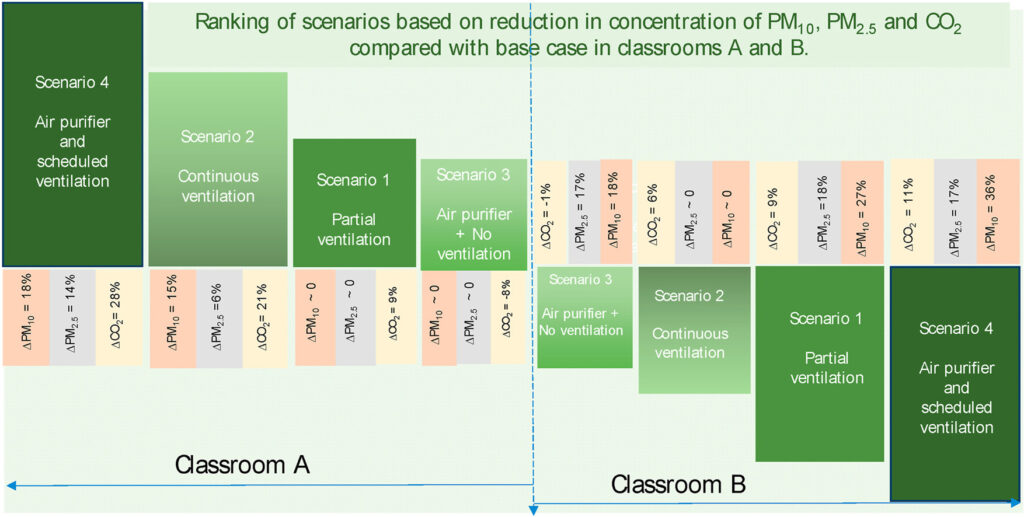Filtering air and opening widows cuts classroom pollution by 36%
A new study by the University of Surrey has found that using air purifiers during the day and opening windows after hours is the most effective way to improve classroom air quality.
On the back of the news that Sadiq Khan was to trial the use of air filters in 200 London Schools, the team experimented with various combinations of air cleaning methods to find which has the greater efficacy.

The scientists monitored pollution in two classrooms at an infant school in Guildford. It is 10m from the A3 road and is passed by 31,000 cars each day.
They studied two classrooms: one facing the road and occupied by 4 to 5-year-olds, and one on the other side of the building, occupied by 6 to 7-year-olds.
Four ventilation scenarios along with the use of HEPA air purifier were studied;
- Partial ventilation (single window open)
- Continuous ventilation (all windows open)
- No ventilation (all windows closed) and air purifier in operation
- Sheduled ventilation (windows opened during non-occupancy period) and using air purifier during occupancy period.
The monitored parameters included PM10, PM2.5, PM1, CO2, temperature, and relative humidity.
In both classrooms, the best improvements in air quality happened when air purifiers were alternated with scheduled window openings. PM10 pollution fell by 18% in the classroom nearest the road and 36% in the other classroom. CO2 fell 28% in the classroom nearest the road and 11% in the other classroom. Smaller improvements were detected when windows were opened without air purifiers.
Nidhi Rawat, a researcher at Surrey’s Global Centre for Clean Air Research (GCARE), said: ‘Alternating purifiers with scheduled window openings is an effective way to clean up classroom air.
‘The most effective combination depends on the characteristics and location of the classroom, and when the teacher opens windows.
‘We also understand that keeping the windows open is not always comfortable or practical – so a sensible, tailored approach is recommended.’
The air purifier was not effective in removing particles when used with windows kept closed in classroom A because the particle removal rate by air purifier was lower than the resuspension rate of PM due to continuous movement of the younger students in the classroom.
Because of this, the Sussex team include among their recommendations that classrooms occupied by younger children who are more active should be cleaned more often, with carpets or rugs being wet-washed. They also suggest that windows should be kept open for as long as possible
Professor Prashant Kumar, director of GCARE, said: ‘Our timely study can help policymakers choose when and how to optimise the benefits of air purifiers and window openings in the classroom.
‘Globally, millions of children are forced to breathe poor quality air while they learn. We hope our study can be used to design ways to make classrooms safer and pupils healthier.’

















